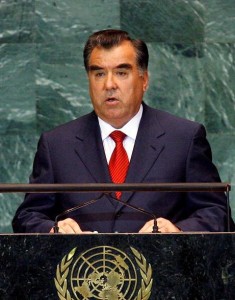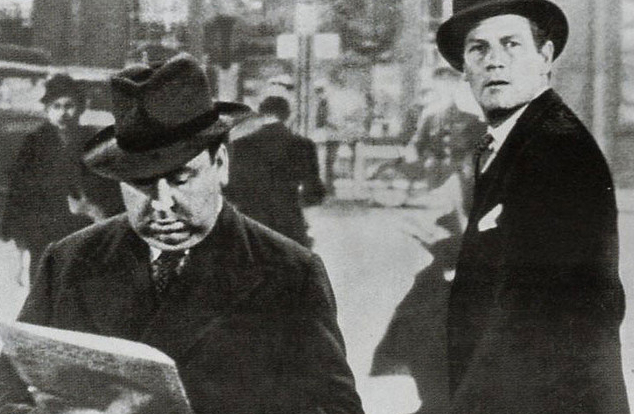YouTube is full of wedding videos featuring fathers dancing badly, and possibly enthusiastically at their child’s wedding. But in Tajikistan, authorities banned YouTube a week after a video of the president dancing and singing exuberantly at his son’s wedding was posted on its site.
If the ban was indeed a clumsy attempt to stop the spread of the images it backfired. The world’s biggest online news website, the Daily Mail picked up the story and several other websites, including the Central Asian news service Ozodagon and several Russian news sites used it as a way to write about the former Soviet country’s limited democracy.
The Tajikistan government never officially connected the two actions: the video was posted on YouTube around 18 May 2013 and a week later Internet and mobile phone providers received an order from the government Communication Service to ban access to YouTube and Toptj, a Tajik website that often publishes material critical of the government.
In an interview to the Russian media, Asomiddin Atoev, the head of the Association of Internet providers in Tajikistan said the authorities had not responded to his questions on why YouTube was banned. Atoev also told Russian news service ITAR-TASS that the authorities often ban websites, but never give a reason.
Dodojon Atovulloev, an exiled opposition politician living in Germany gave an interview to Kazakh television station K+ in late May, saying he had posted the video, which showed President Emomali Rahmon, singing “Tajikistan, you are mine with all your pain and cures” at his son’s wedding in 2009, to highlight the fact that the president’s family were holding an extravagant wedding.
Tajikistan passed a law 2007 designed to stop people ruining themselves financially through big weddings. Traditionally Tajikistan families invite 400 or more guests to celebrate the occasion with singing and dancing lasting for several hours. The law stated that weddings can have a maximum of 300 guests and celebrations should not last more than three hours.
The video of President Rahmon’s wedding does not offer proof that the laws were being broken, as it gives no indication of the number of guests or the length of the celebrations.
But, it provided footage of the president being relaxed and informal. According to the Daily Mail, 300,000 viewers watched the video before the country’s top communication service stepped in to block access to YouTube in Tajikistan.
Officially, the YouTube ban only lasted a few days. On May 27 Russian radio Moscow’s Echo (Эхо Москвы) quoted Asomidin Atoev with a reference to the news agency ITAR-TASS as saying that the ban was lifted. But people in Tajikistan say access to YouTube remains spasmodic: this week, they have had more problems accessing the site.
Within Tajikistan the ban will have achieved little. Most of Tajikistan’s citizens have little to no access to the internet and would not have seen the video at all. The ones who are online usually know how to bypass government blocks and are now more likely to seek out the video.
But the incident has highlighted Tajikistan’s heavy handed approach to free speech, and damaged the country’s reputation abroad. Foreign news outlets, many of whom had never reported on Tajikistan or its president picked up the story.
Press freedom is an ongoing problem for Tajikistan, a country marked red for limited freedom of speech on the Reporters Sans Frontieres map. Several news outlets that have criticized the administration have been closed and popular content sharing networks Facebook and YouTube have been temporarily blocked on several different occasions. This story of a dancing president and a wedding video only highlights how futile these bans on internet sites can be.
Photo credits: Katsu Nojiri / Flickr CC; United Nations / Flickr CC
Tags: Emomali Rahmon, Press freedom, Reporters Sans Frontiers, Reporters without Borders, Tajikistan, The Daily Mail, YouTube, YouTube banned















































